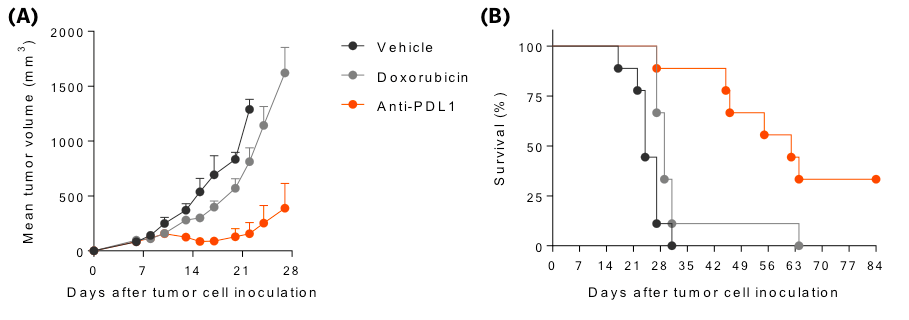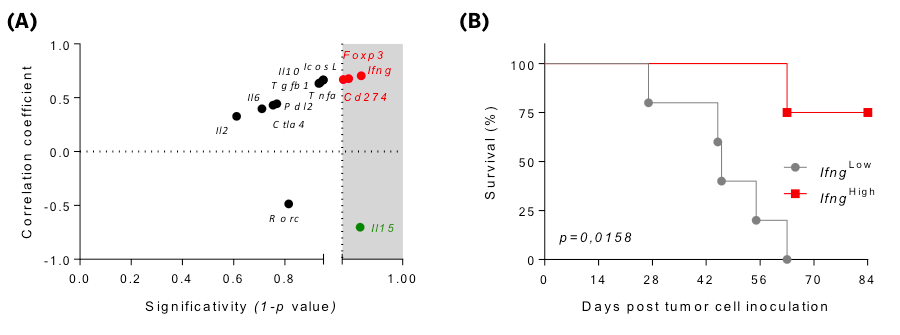Figure 1: Experimental schedule for intratumoral biopsy and efficacy monitoring
Because of its responsiveness to checkpoint blockade and moderate response to chemotherapy (e.g. anti-PD-L1 antibody and doxorubicin, respectively) (Figure 2), the MCA205 sarcoma model represents a suitable tool to assess innovative drug candidates for their ability to enhance the anti-tumor response, and characterize their mechanisms of action (MoA) and signaling pathways that contribute to such response.
Figure 2: Subcutaneously-implanted MCA-205 sarcoma tumor-bearing mouse model is strongly responsive to PD-L1 blockade and only partially to doxorubicin. Mice were SC inoculated with MCA-205 murine sarcoma cells (1×106cells) and exposed to anti-PD-L1 antibody or doxorubicin. Tumor growth was monitored overtime. Tumor volume (A) and survival (B) were then determined.
Indeed in a very interesting way, we characterized the immunomodulation mechanisms underlying the pharmacological response to anti-PD-L1 antibody, by gene expression analysis* on intratumoral biopsies collected from the same mice monitored for efficacy (fig. 1). This methodology and data analysis allowed to highlight a correlation between key gene expression modifications (e.g. Ifng) and survival effects triggered by the treatment (Figure 3). Altogether, these results show that performing intratumoral biopsy on our preclinical models (simultaneously with efficacy monitoring), is a well-suited approach to delineate MoA of candidate compounds, or identify a biomarker predictive for the pharmacological in vivo response.
Figure 3: Analysis of the correlation between key immune marker encoding genes and survival. Changes in the intratumoral expression of selected immune marker encoding genes are correlated with survival of MCA-205 tumor-bearing mice treated with anti-PD-L1 antibody (A). An example of a significant correlation is illustrated in (B) for Ifnggene expression. Mice showing high intratumoral Ifng gene expression (IfngHigh) display the longest survival, compared to those with a lower Ifng gene expression (IfngLow).
* Other methodologies and platforms e.g. FACS immunophenotyping… are available.
More about our in vivo services in immuno-oncology




